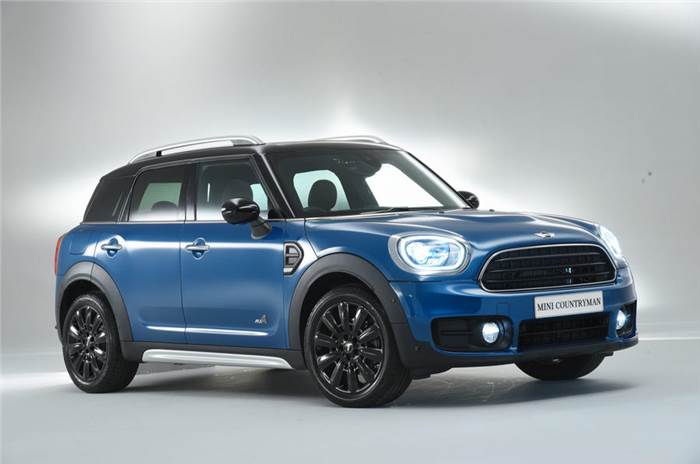Mini has revealed its second-generation Countryman ahead of its international launch in February next year.
Measuring 4.3 metres with an extra 7.5cm inserted into the wheelbase, the new Countryman is the largest Mini model yet. Mini says the car is now firmly anchored into the C-segment, making it an alternative to everything from a Volkswagen Golf to premium compact SUVs such as the Audi Q3.
The exterior of the car, although a recognisable development of the original, gives it a much more four-square stance with the deep sides, large wheels and notably squared-off rear corners. The headlights are a similar shape to those of its predecessor but less dominant, and the classic Mini grille is slightly less prominent. Another new styling feature is the use of distinctive hard edges pressed into both front and rear wings.
The distinctive three-window profile has been retained, but the rearmost side windows are now much longer, helping to underline the car’s increase in size. Mini says all models will get large silver roof bars to help mark the car out as a true crossover.
Opening the doors reveals notably tall apertures, which make getting in and out of the car easier. The dashboard design is also all-new, rather than being borrowed from its Clubman sister model. It retains the giant ‘dinner plate’ central screen, although it now has rectangular air vents in a move away from Mini’s traditional circular vents.
Mini product boss Nicolas Griebner said 85 percent of Mini sales are to private buyers specifying their own car. To that end, personalisation touches such as dual-colour door trims and options including piped and quilted leather trim are intended to allow buyers to specify the Countryman “up to the level of a luxury car”.
The new Countryman has a bigger boot than the typical C-segment hatchback (a useful 470 litres), as well as the option of a rear bench-seat that can slide 13cm and a rear seatback that reclines and splits in three sections (40/20/40).
As for the engines, the new Countryman range kicks off with the turbocharged 1.5-litre three-cylinder petrol Cooper model, which produces 138hp and 220Nm of torque. The Cooper S gets a 2.0-litre four-cylinder petrol engine tuned for 195hp and 279Nm. A 2.0-litre unit produces 152hp and 329Nm in the base Cooper D, and 193hp and 340Nm in the Cooper SD. A tweaked version of Mini’s All4 four-wheel drive transmission is available as an option on all four engines.
This line-up will be joined later next year by Mini’s first hybrid model, the Countryman SE. The hybrid model offers all-wheel drive by combining the three-cylinder petrol engine with a six-speed automatic transmission, which drives the front wheels, and an 89hp electric motor mounted on the back axle and driving the rear wheels through a two-speed transmission.
With both engines running at full power, the hybrid Countryman has a combined peak output of 227hp and 385Nm. Mini claims it’s possible to travel at up to 126km in battery-only mode. The hybrid Countryman has a claimed electric-only range of 40km and a 0-100kph time of 6.9sec.
Despite the Countryman being a proper crossover, Mini will offer a JCW Chili Pack in international markets, which adds an aero kit, sports suspension and 18-inch wheels.
The crossover had been spied testing in India earlier this year, and is expected to hit our showrooms sometime next year.





Comments
Member Login
Personal Details
No comments yet. Be the first to comment.